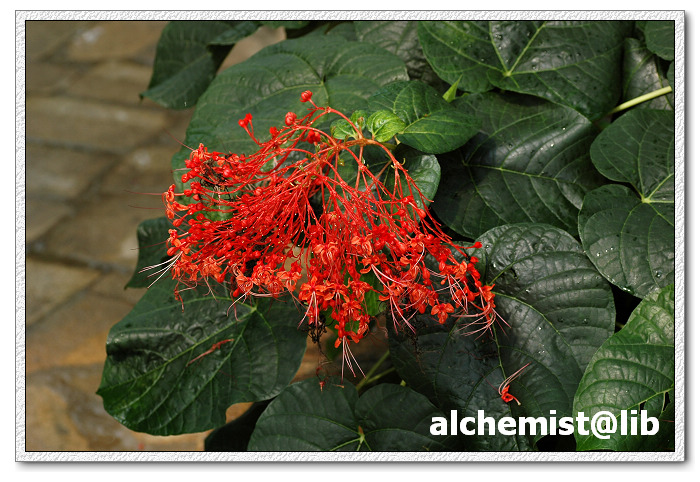- Scientific Name: Clerodendrum japonicum (Thunb.) Sweet
- Ref: Hort. Brit.: 822. 1826
- Synonym: Volkameria japonica Thunb.
- English Common Name: Japanese glorybower
- Chinese Common Name: 赪桐 chēngtóng
- Japanese Common Name: ヒギリ [緋桐] higiri
- Family: Lamiaceae
- Genus: Clerodendrum
- Distribution: Thickets in valleys, along streams, in grassy openings; 100-1200 m. Fujian, Guangdong, Guangxi, Guizhou, Hunan, Jiangsu, S Jiangxi, Sichuan, Taiwan, Xizang, Yunnan, S Zhejiang [Bangladesh, Bhutan, India, Indonesia, Laos, Malaysia, Vietnam]
- Photo: 06/21/2009, South China Botanical Garden, Guangdong
Shrubs 1-4 m tall. Branchlets 4-angled, pubescent to subglabrous, nodes sometimes villous. Petiole 0.5-15(-27) cm, densely yellow-brown pubescent; leaf blade subcordate, 8-35 X 6-27 cm, sparsely pubescent, abaxially densely covered with numerous peltate glands often covered with a sand-colored secretion, base cordate, margin sparsely serrulate to dentate, apex acuminate to acute. Inflorescences terminal thyrses, 15-34 X 13-35 cm; bracts and bractlets usually reddish. Calyx red, 1-1.5 cm, deeply 5-lobed, pubescent, outside sandy glandular; lobes ovate-lanceolate to ovate, 0.7-1.3 cm. Corolla white or red, tube 1.5-2.2 cm; lobes oblong, 1-1.5 cm. Stamens and style 3 X or more longer than corolla tube. Fruiting calyx much longer than fruit, becoming reflexed. Drupes green when young, blue-black at maturity, subglobose, 7-10 mm in diam. Fl. and fr. May-Nov. (Flora of China)
